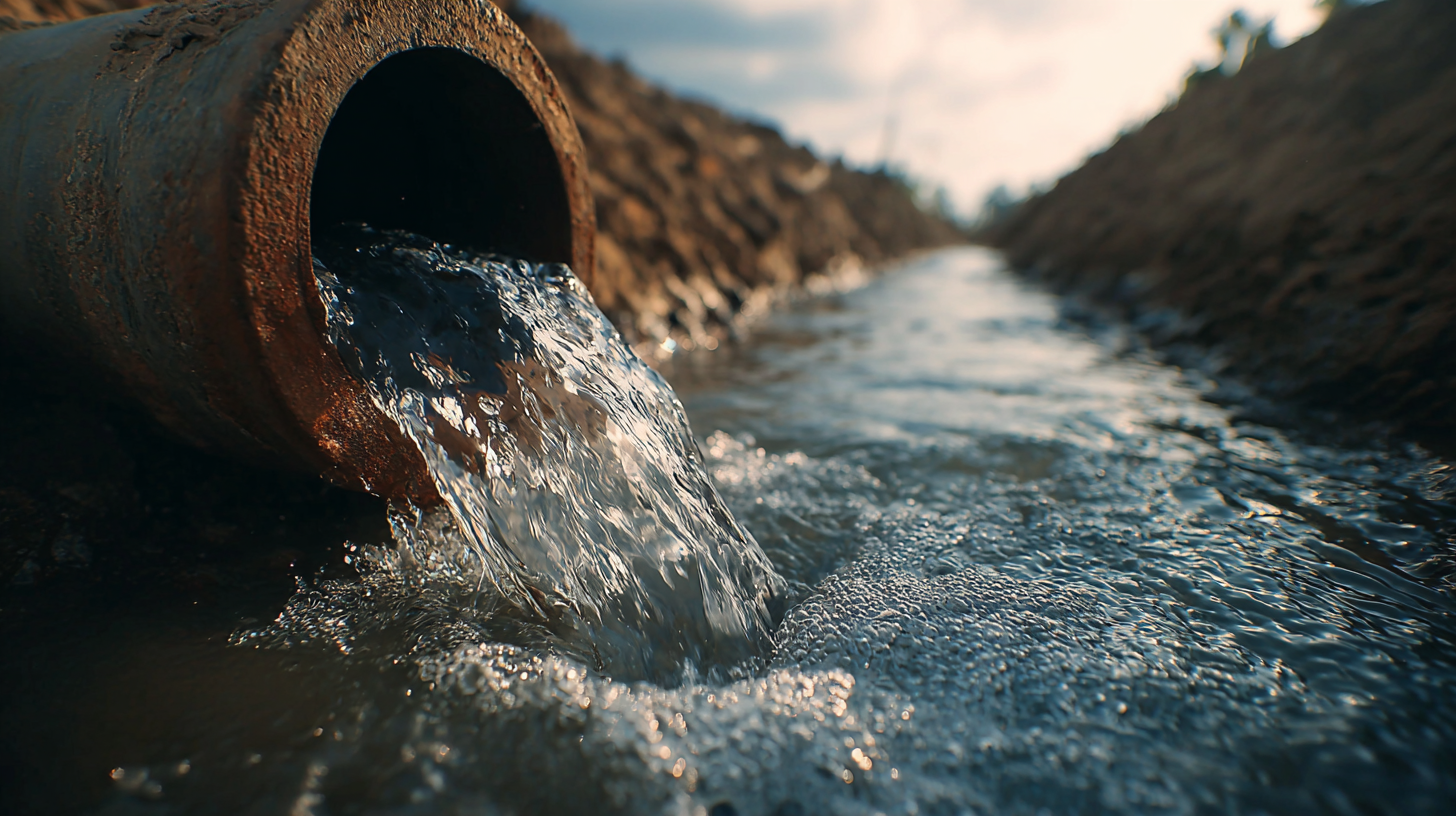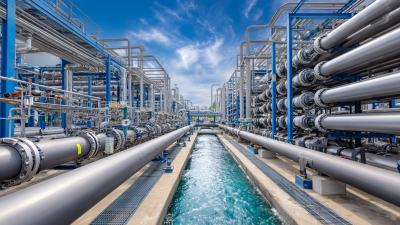Leave Your Message
Request a Quote
The quest for clean and safe drinking water is an ongoing challenge that underscores the significance of effective water treatment processes. Filtration media play a pivotal role in this endeavor, influencing not only the clarity but also the contaminant removal efficiency of water treatment systems. According to the Water Quality Association, nearly 85% of households in the United States rely on some form of water treatment, highlighting the essential nature of filtration technologies. Reports indicate that the selection of appropriate filtration media can improve water quality by reducing levels of harmful substances such as heavy metals, bacteria, and sediments, thereby making water safer for consumption. As water resources face increasing pressure from pollution and climatic changes, understanding the properties and effectiveness of various filtration media becomes crucial in developing sustainable solutions for water quality enhancement. This paper aims to explore the multifaceted impacts of filtration media on water quality improvement, providing insights into their applications and benefits in water treatment systems.

Filtration media play a crucial role in enhancing water quality by removing impurities and pollutants. There are several types of filtration media, each designed to target specific contaminants. One of the most common types is activated carbon, which effectively adsorbs organic compounds, chlorine, and heavy metals. Its porous structure increases the surface area available for adsorption, making it highly efficient in improving taste and odor in drinking water.
Another important filtration media is sand, frequently used in traditional water treatment systems. Sand filters work by physically trapping particles and sediment as water passes through, thus reducing turbidity. In addition to sand, other natural materials like gravel and diatomaceous earth are also utilized, as they enhance the filtration process through their varied particle sizes, which can trap different types of contaminants. Each of these filtration media contributes significantly to the overall effectiveness of water purification systems, ensuring that the water is not only cleaner but also safer for consumption.
Filtration media plays a crucial role in enhancing water quality, and recent studies highlight their varying effectiveness in removing contaminants. A 2022 report by the American Water Works Association indicates that activated carbon can remove up to 80% of chlorine and its by-products, as well as a significant percentage of organic compounds, thus improving taste and safety. This high adsorption capacity makes it a popular choice for municipal water treatment facilities aiming to meet stringent regulatory standards.
In contrast, a comparative analysis published in the Journal of Water Resources highlights the effectiveness of sand filtration, which typically achieves a turbidity reduction of 90% or more. While sand filters primarily target particulate matter, their longevity and low operational costs make them an attractive option for small-scale and rural water systems.
Moreover, newer advancements in filtration technologies, such as ceramic and membrane filters, have shown promising results in removing bacteria and viruses, with efficacy rates exceeding 99%. Continuous evaluations of these filtration media are essential to optimize water treatment processes and ensure safe drinking water for communities worldwide.
The choice of filtration media plays a crucial role in enhancing water quality, with natural and synthetic materials each offering unique advantages. Natural filtration media, such as sand, gravel, and activated carbon, are often praised for their eco-friendliness and effectiveness in removing contaminants. According to the Water Research Foundation, natural media can reduce turbidity by up to 90% and effectively adsorb various organic pollutants due to the high surface area of materials like activated carbon. These materials not only contribute to improving water quality but also support sustainable practices by utilizing locally sourced resources.
On the other hand, synthetic filtration materials, including advanced polymers and engineered membranes, are gaining traction due to their targeted performance and longevity. A study from the American Water Works Association highlights that synthetic filters can achieve a removal efficiency of over 99% for specific contaminants, including heavy metals and pathogens. While they may involve a higher initial investment, the longevity and efficiency of synthetic materials often lead to lower operational costs in the long run. As industries and municipalities seek reliable solutions for water purification, the comparative analysis of these filtration options becomes critical in making informed decisions that align with water quality improvement goals.

The landscape of water treatment is transforming rapidly, driven by innovations in filtration media that promise enhanced efficacy and sustainability. A significant area of focus is the integration of AI-powered operational intelligence, which optimizes filtration processes, enhances monitoring capabilities, and improves overall water quality. As the demand for safe drinking water continues to escalate, projections indicate a remarkable growth trajectory for the water purifier industry, expected to reach a staggering USD 295 billion by 2035, with a CAGR of 13.86%. This growth is largely attributed to increasing awareness of waterborne diseases and a push towards sustainable solutions.
In addition to advanced technologies, decentralized infrastructure is gaining traction as an innovative approach to water treatment, providing tailored solutions that can be deployed closer to the point of use. This model not only facilitates efficient flood prevention but also allows for better resource management in urban settings. For instance, the Bulk Filtration Market is seeing an uptick in demand for customizable filtration solutions, reflecting a broader trend toward personalized water treatment systems. As showcased at industry events like Aquatech Amsterdam, companies are unveiling next-generation solutions, including novel filtration materials and methodologies that set the stage for a more resilient and responsive water treatment sector.
The choice of filtration media plays a crucial role in enhancing water quality across various systems. Different materials, such as sand, activated carbon, and ceramic filters, each contribute uniquely to the removal of contaminants. According to a report by the Water Research Foundation, activated carbon filtration can reduce total organic carbon levels by up to 50%, significantly improving taste and odor while simultaneously removing harmful substances like chlorine and volatile organic compounds (VOCs). The effectiveness of each medium is highly dependent on its physical and chemical properties, including surface area and porosity, which influence the adsorption capabilities.

Moreover, the environmental implications of using various filtration media are significant. For example, the production of activated carbon often involves high-temperature processes that result in a substantial carbon footprint. A life-cycle assessment conducted by the International Journal of Environmental Resources Research indicates that while activated carbon is effective, its environmental cost must be weighed against its benefits. Conversely, natural filtration media, such as sand and gravel, have a lower environmental impact, utilizing abundant resources with minimal processing. This highlights the need for a balanced approach in selecting filtration methods that not only prioritize water quality improvement but also consider sustainability and environmental health.







